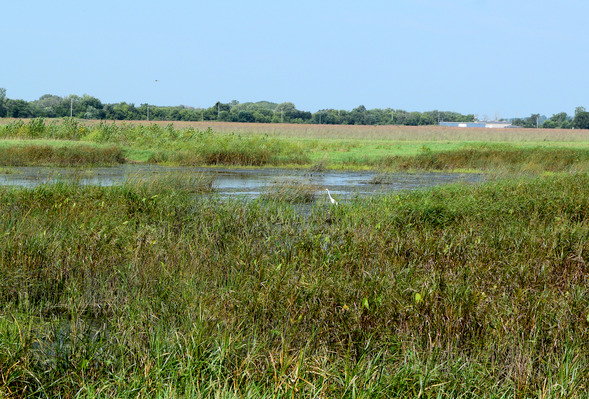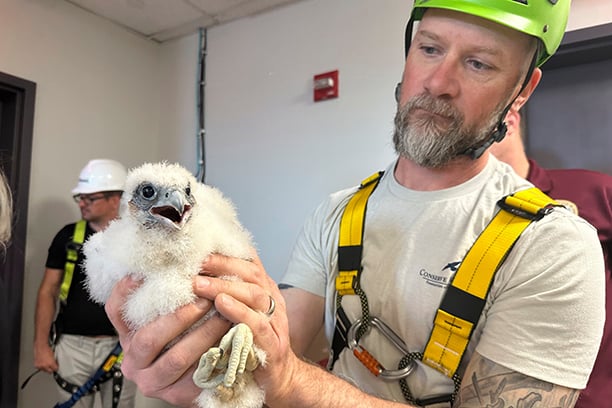Mix of habitats attract wildlife diversity at Iowa’s Big Marsh Wildlife Area near Dumont – Outdoor News

Dumont has a front row view of the 614-acre northern section of Big Marsh Wildlife Area and the pheasants, turkeys, ducks, geese, eagles and more wildlife that call the area home.
The recently added parcel southeast of town with a history of flooding, between the West Fork of the Cedar River and Hartgrave Creek, was sold to the Iowa Department of Natural Resources (DNR) after attempts by multiple landowners to consistently farm it were unsuccessful.
Landowners had built a dike system to try to keep water from the river and creek out. They had dug a trench through it to try to drain the land. But ultimately the floodplain and flash flood nature of the system were too much and it was added to the Big Marsh Wildlife Area.
The dike system remains, but now is used to keep water on the landscape. The NRCS designed and installed a water control structure on the south end to help manage the water level and wetland habitat. The floodplain is managed with a number of wetland basins with small grains and annual wetland plants for food for resident and migrating wildlife.
Winding south and west along the dike, a pair of sandhill cranes take flight from the drying wetland. A young bald eagle was soaring overhead.
“This is an awesome area, full of diverse wildlife,” said Justin Clark, wildlife biologist for the Iowa DNR.
MORE COVERAGE FROM OUTDOOR NEWS:
Here’s how to approach your new pup’s first season as a duck retriever
Jeremiah Haas: Coordinate with local farmers for a better deer hunt
Iowa’s fall community trout stocking starts Oct. 18
Management focuses on increasing the amount of forage available and battling the invasive Reed canary grass that thrives in wet soils. “You can’t fight the floodplain,” Clark said. “We turned to what worked decades ago – small grains. We chose what’s out there versus trying force prairie in a place that will become canary grass.”
Clark said it’s a constant battle to try to contain the aggressive invader. The plan calls for a combination of haying and spraying the invader after Aug. 1, which avoids negatively impacting ground nesting animals.
“This encourages smartweed, bidons, milkweeds, giant ragweed and common ragweed while keeping the canary grass down,” he said. “The weedy component attracts bugs that benefits pheasant chicks, turkey poults and, in the fall, seeds, that are good fuel for waterfowl.”
The diverse habitat is what makes this section of Big Marsh so valuable to wildlife. Big Marsh is home to red shouldered hawks, sandhill cranes, Blandings turtles, all types of waterfowl, and is a stopover for migrating birds.
It is also valuable as an outdoor classroom, hosting students from Aplington-Parkersburg, Dike-New Hartford, Clarksville and troops of Scouts, and has provided summertime hands-on externships to teachers for more than a decade.
The habitat changes as the elevation rises slightly to the west where the restored prairie is more successful. Butterflies, bees, dragonflies and more bounce from flower to flower, darting in and out of the prairie.
Here, the plan is to mow firebreaks in different locations to try to increase plant diversity. Fire is important management tool and the east half was burned in 2022, followed by the west half in 2024. The higher elevation is attractive to pheasants, turkeys and turtles.
The east side of the dike has oxbows and sloughs that is always wet. The 1-1/2 miles of mowed dikes and old railroad grade are a great place to hike and see wildlife and get fresh air and exercise.
The Big Marsh area resumes just to the west of Dumont and north of Hwy. 3, with Hargraves Creek flowing through its southern portion. Roughly 38 acres of this parcel is within Dumont city limits so only archery hunting is allowed – no guns.
Hargraves Creek has a history of flooding this area, impacting the town. As a means of preventing flooding, the Iowa DOT has a project that will move a culvert under Hwy. 3 to allow more water through, and Butler County will raise the north-south gravel road on the west side of town to create a barrier to the floodwaters.







